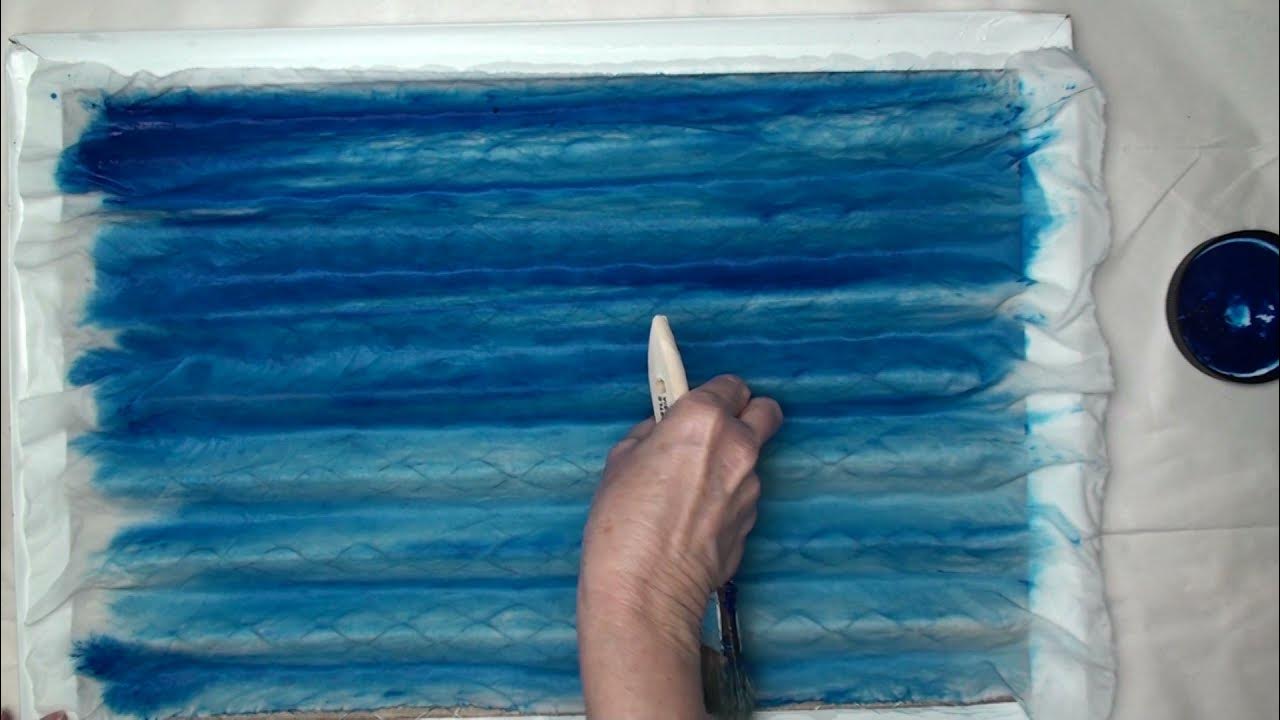Tutorial membuat Kaos Tie Dye (DIY Shibori T-Shirt Tie Dye)
Summary
TLDRThis tutorial video demonstrates three popular shibori tie-dye techniques, perfect for unique textile designs. First, it covers the 'Suci style,' where fabric is folded in an accordion pattern and tied in circular sections for a balanced look. Next is 'Itajime,' which uses accordion folds held by rubber bands, making it simpler to execute. Lastly, the classic 'Tie-dye' style involves randomly scrunching and tying the fabric to create unpredictable, vibrant patterns. The video uses procion or remazol dyes, highlighting methods to achieve varied color depth, while mixing primary colors for custom shades. It offers creative inspiration and practical steps for unique, handmade textile art.
Takeaways
- 🧵 The video is a tutorial on how to make three different shibori styles.
- 🔄 The first style is called 'Suci' shibori, which involves folding fabric in an accordion style and tying it with a string to create balanced designs.
- 📏 Accuracy in folding isn't necessary, as the uniqueness comes from imperfections.
- 🎨 The second style is 'itajime,' a simpler method that uses rubber bands instead of string after folding the fabric in an accordion style.
- 🌀 The third style is 'taida,' where the fabric is randomly crumpled and tied with rubber bands to create unpredictable patterns.
- 🌊 The fabric can be soaked in water before dyeing to allow for deeper color absorption.
- 💧 Procion or Remazol reactive dyes are used in this tutorial for vibrant and easy application.
- ⏳ The dyed fabric needs to dry overnight before the washing process.
- 🎨 For the 'taida' style, mixing primary colors (blue, red, and yellow) can create new colors.
- 💧 The intensity of the colors depends on the water-to-dye ratio, with more water creating lighter shades.
Q & A
What is the first style of shibori mentioned in the tutorial?
-The first style mentioned is 'Suci style shibori,' which involves folding the fabric in an accordion pattern and tying it circularly with a rope.
Why is the accordion tie method important in Suci style shibori?
-The accordion tie method is important because it ensures balance between both sides of the fabric, although the end result may not be perfectly neat due to the unique nature of handcrafting.
What materials are suggested for tying the fabric in Suci style shibori?
-For tying the fabric, materials such as raffia or polyester thread can be used.
What is the second style of shibori described in the script?
-The second style is 'itajime shibori,' which is simpler than the first style. It involves folding the fabric in an accordion pattern and using rubber bands to hold it in place.
How does the fabric folding process differ between Suci and Itajime shibori?
-While both styles use the accordion folding method, in Itajime shibori, there is no need for tying with rope; instead, rubber bands are used to secure the fabric.
What is the third shibori style mentioned, and what makes it unique?
-The third style is 'taida,' which is the most distinctive and widely made. It involves crumpling the fabric randomly and tying it with rubber bands, resulting in unpredictable patterns.
How can the amount of dye absorbed in taida shibori be controlled?
-The amount of dye absorbed can be controlled by adjusting the tightness of the rubber bands. Tighter bands result in less dye absorption, while looser bands allow more dye to penetrate the fabric.
What types of dyes are recommended for these shibori techniques?
-Procion, Remazol, or reactive dyes are recommended because they are easy to use and show immediate color when mixed with water.
How long should the fabric be left to dry after dyeing in shibori?
-The fabric should be left to dry overnight to ensure the dye sets properly before proceeding to the washing process.
What are the primary colors used in shibori, and how can other colors be created?
-The primary colors used are blue, red, and yellow. By mixing these basic colors, various other shades can be produced, depending on the desired outcome.
Outlines

هذا القسم متوفر فقط للمشتركين. يرجى الترقية للوصول إلى هذه الميزة.
قم بالترقية الآنMindmap

هذا القسم متوفر فقط للمشتركين. يرجى الترقية للوصول إلى هذه الميزة.
قم بالترقية الآنKeywords

هذا القسم متوفر فقط للمشتركين. يرجى الترقية للوصول إلى هذه الميزة.
قم بالترقية الآنHighlights

هذا القسم متوفر فقط للمشتركين. يرجى الترقية للوصول إلى هذه الميزة.
قم بالترقية الآنTranscripts

هذا القسم متوفر فقط للمشتركين. يرجى الترقية للوصول إلى هذه الميزة.
قم بالترقية الآنتصفح المزيد من مقاطع الفيديو ذات الصلة

Cara Membuat Batik Jumputan Teknik Shibori Pola Segitiga Sama Kaki || SBDP Kelas 5 Tema 9

TUTORIAL 8. CARA MEMBUAT BATIK CAP

Cara Membuat Batik Jumputan 3 Warna Teknik Shibori || Batik Tie Dye || SBDP Kelas 5 Tema 9

Painted Fabric - Five Techniques

Cara Membuat Batik Jumputan Teknik Shibori Motif Zigzag || Batik Ikat Celup || SBDP Kelas 5 Tema 9

Cara Membuat Tote Bag Tie Dye dengan Pewarna Wenter/ Wantex || Tote Bag Jumputan || Tote Bag Shibori
5.0 / 5 (0 votes)
